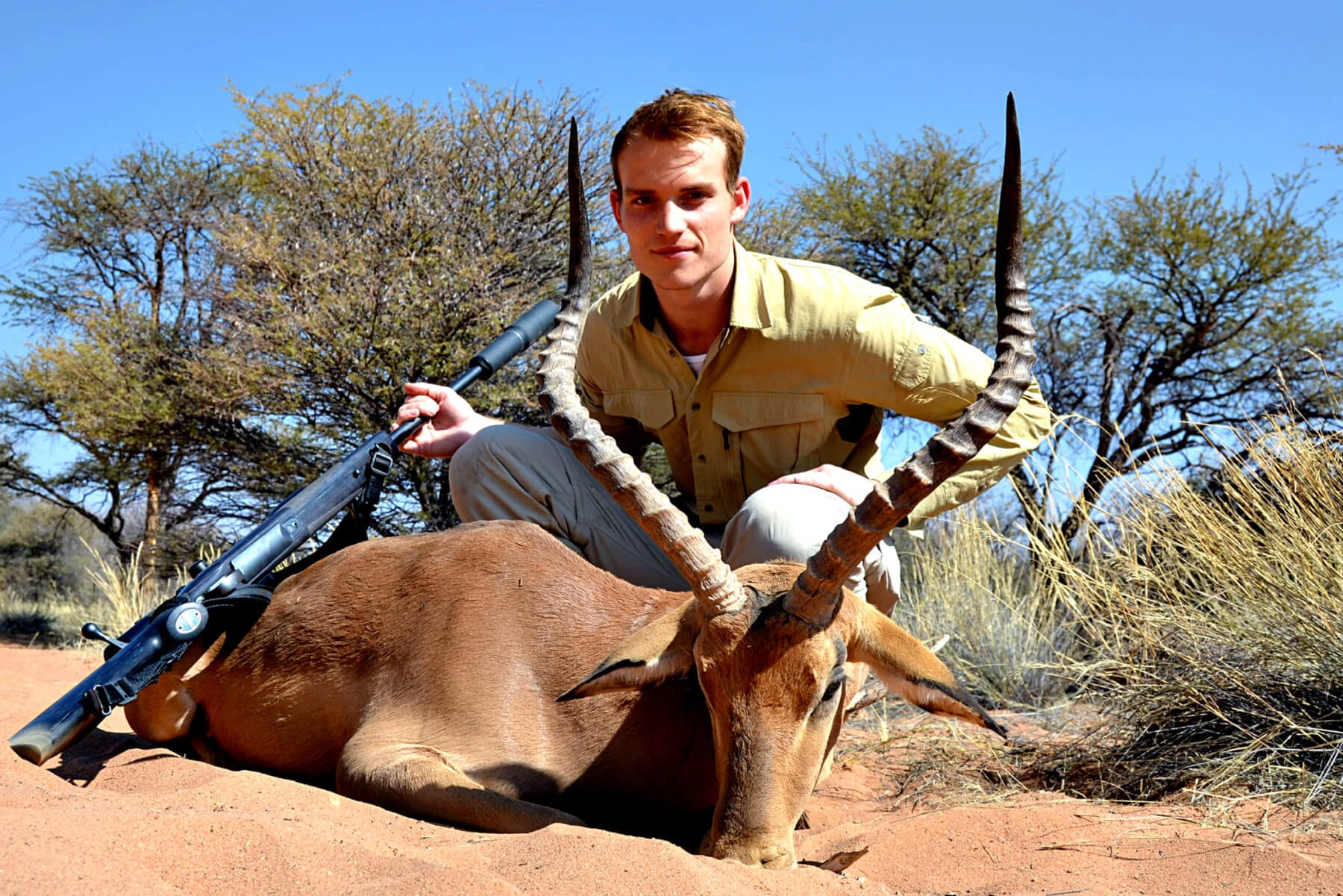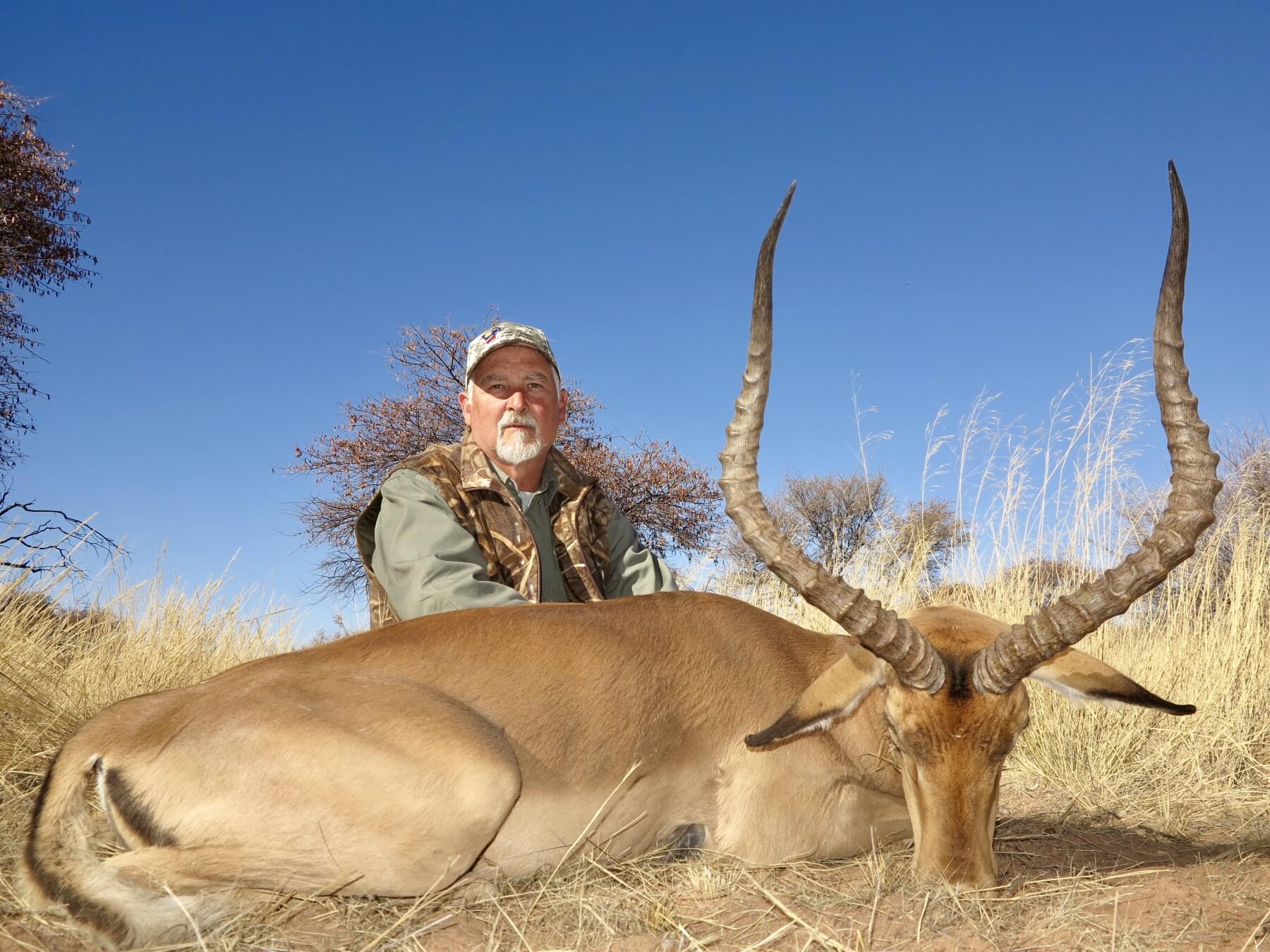The common impala reaches 70–92 centimetres (28–36 inches) at the shoulder and weighs 40–76 kg (88–168 lb). It features a glossy, reddish brown coat. The male's slender, lyre-shaped horns are 45–92 centimetres (18–36 inches) long.
Impala are sexually dimorphic. In this species only the males have S shaped horns. These horns are heavily ridged, thin, and the tips lie far apart. Both sexes are similarly colored with red-brown hair which pales on the sides. The underside of the belly, chin, lips, inside ears, the line over the eye, and tail are white. There are black stripes down the tail, forehead, both thighs, and ear tips.




